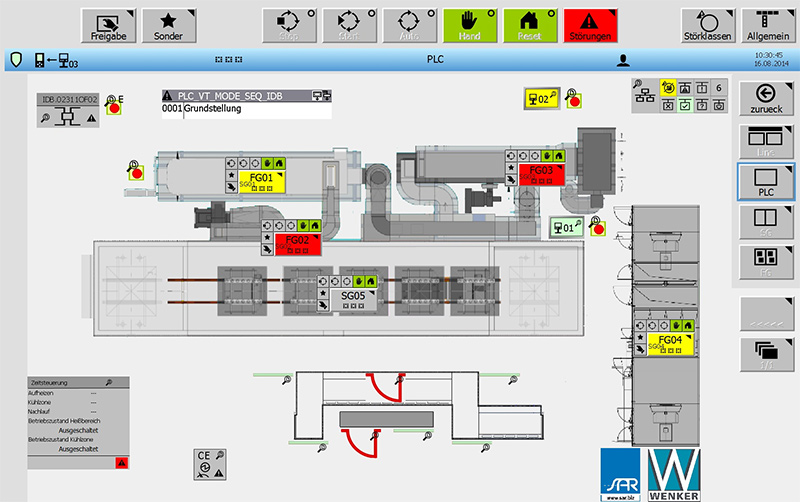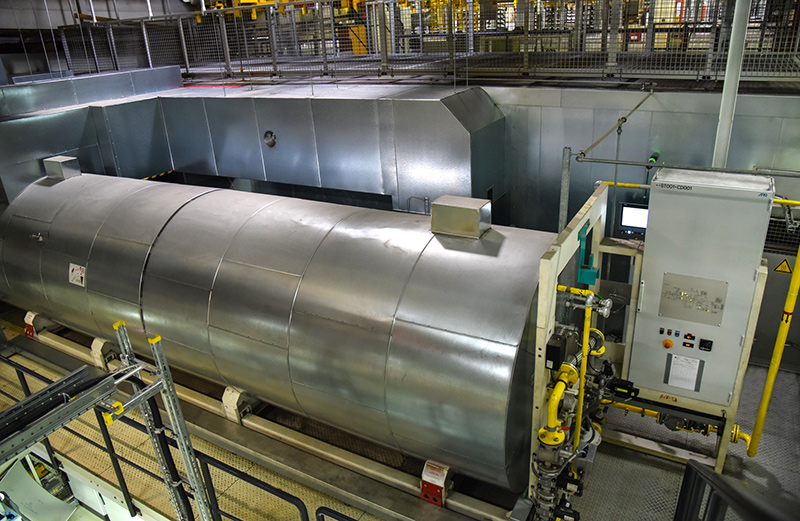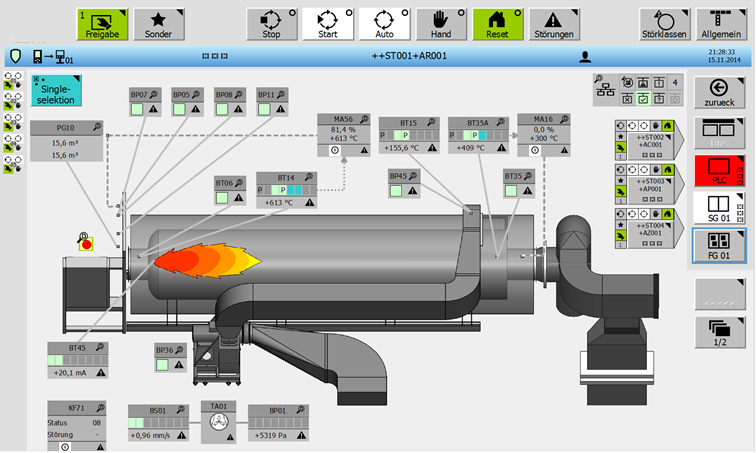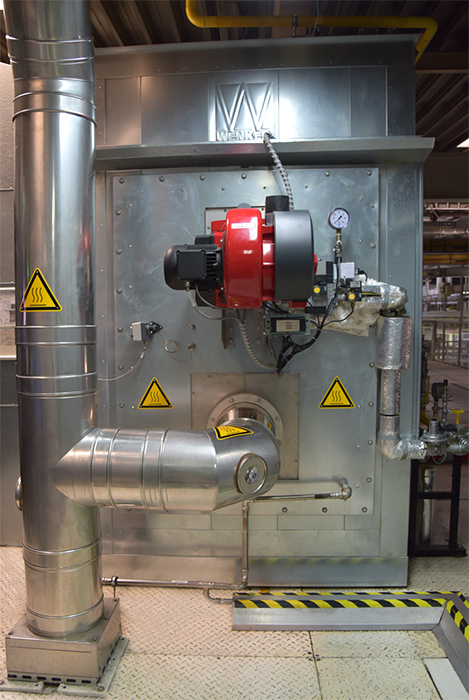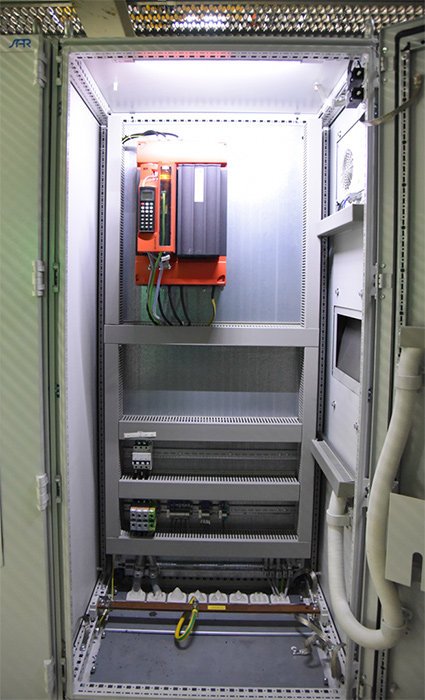Body shop standard extended to process engineering applications for the first time in the TIA Portal.
New production methods and materials are increasingly being applied to automotive manufacturing. This trend should therefore make the extensive modernisation of the dryer for doors, hatches, bonnets and boot lids more than worthwhile.
Apart from the specific layout of the dryer for new production processes and materials, it was also required to make energy savings during the drying process.
New TIA controls and visualization
Apart from the shell, the dryer has been completely redesigned to achieve the targets. SAR has provided the control system for process engineering, amongst other items.
This included using the new TIA controls and visualizations. Due to the advantages of TIA, such as symbolic programming and the combination of PLC and visualization into a single platform, it was possible to carry out commissioning in the shortest possible time.
SAR has extended the existing body shop standard to process engineering applications, for the CPU1518F, thus creating an optimum solution, which has been implemented for the first time in this form.
This required extending the previous standard with analogue signal processing, in order to take account of the temperature and the position of control dampers,
for example, or the values from vibration sensors and pressure readings, as well as to allow operation from the PLC via the visualization.
The various factors require multiple control loops. As a result the option to build up rules in the PLC has been created.
Fan motor control is achieved via standard SEW frequency inverters. However, fan motors have very different technical requirements to the positioning drives that are usually used in the body shop,
such as long acceleration and deceleration times or starting the motor, and it was therefore necessary to create a new software solution in the PLC.
Replacement of all fan motors
As part of the modernization all the fan motors were exchanged. Air ducts adapted to volume and a revised regulation enable more efficient control of air use.
By recirculation of waste heat in the process, less heated fresh air is needed, and gas consumption is reduced.
Turning on and starting up the dryer occurs automatically, based on defined parameters, through a combination of control signals, time and residual heat. This required adding a time control logic to the previous operating mode design.
This allows the dryer, for example, to switch on later when residual heat is present and still reach its target temperature at the desired time.
A portion of the recirculating air is continuously extracted from the dryer and purified in the thermal oxidiser. The heat energy thereby generated is used to heat the dryer by an air circulation unit.
The residual energy from the thermal oxidiser, which cannot be directed to the circulation unit, is used by a fresh air heat exchanger to continuously feed heated fresh air to the dryer.
If there are no parts ahead of the dryer, the slow-down mode is automatically activated and the combustion chamber temperature of the thermal oxidiser is lowered.
Great care has been taken throughout the modernisation to make the best possible use of the thermal energy of the natural gas.
As a result energy consumption could be significantly reduced, therefore enabling a saving in gas consumption.
Emphasis on plant safety
As with all projects, great emphasis was placed in this project on the issue of plant safety. All combustion chambers are also equipped with safety cut-outs, which switch off the burner on the hardware side, if necessary.
The software monitors all the drives, filters and the air balance and initiates action when required.
All the sensors are checked for plausibility. The heat exchangers of the dryer have a safety temperature limiter, which switches off the associated thermal oxidiser if the set temperature is exceeded.
As part of the refurbishment, it was also necessary to extend the conveyor system for future vehicle models.
As the conveyor system could be refurbished independently of the process engineering, the conveyor system and process engineering were divided into two controllers.
This allowed both units to be put into operation in parallel within the short period of program interruption. Exchange of information occurs between the two controllers via a PN/PN coupler.
Future extensions to the conveyor system or process engineering can be carried out independently.
Efficient, energy saving operation through intelligent control of process engineerin
With the modernisation of the dryer, the project partners were able to achieve an optimum design for the new production methods and materials used in automotive assembly with simultaneous energy savings.
Through intelligent control of process engineering, SAR has been able to realise efficient and energy saving operation of the dryer.
The recirculation of the waste heat in the process, the best use of thermal energy and the automatically selected operating states of the dryer, based on different parameters, have lead to significant savings in gas consumption.
For further information please contact us at
aut@sar.biz


